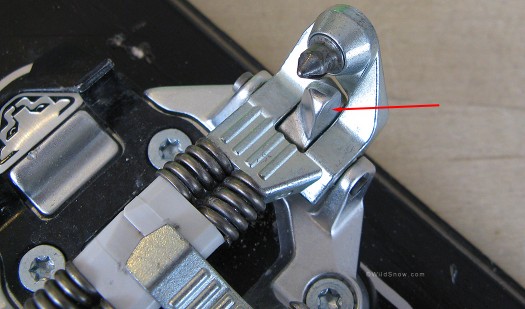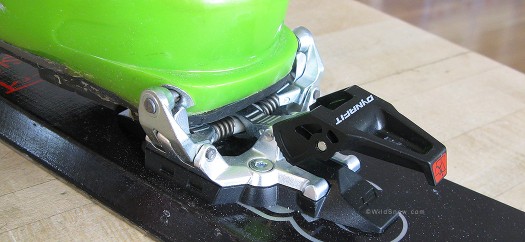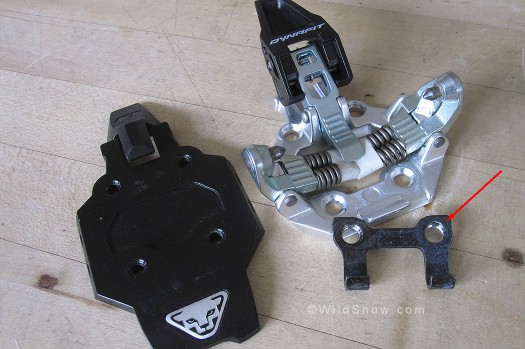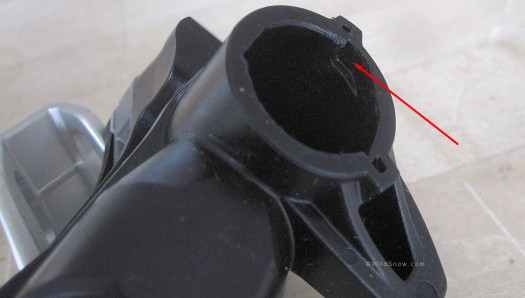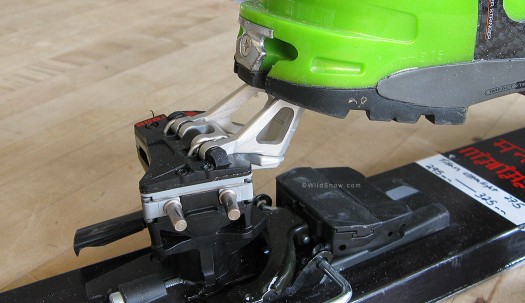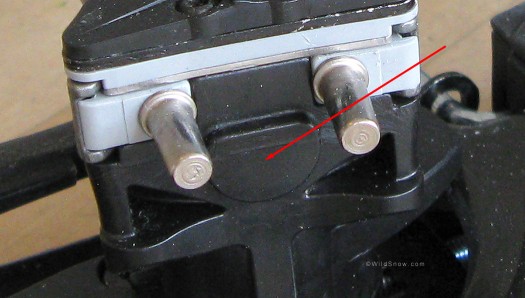Pantheon of backcountry glisse, the mountain rises. Tiny gods and godettes swoop through crystalline fluff above as you prance strongly into your 4th lap, going on 5,000 vert. You don’t even feel it — or put correctly, all you feel is the joy of tech bindings that lift your feet as Cupid’s wings lofted him to the Roman equivalent of online dating. Only in this case, on your feet is the new Dynafit Radical ST or FT backcountry skiing binding, and any dating will have to wait till later because what you’re doing might not be better than dinner with a goddess (or god, as the case may be), but lasts longer and costs less.
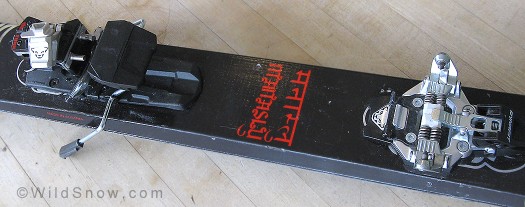
New in the tech binding pantheon, Dynafit TLT Radical ST backcountry skiing binding is marked departure from previous Dynafit models. It has an entirely different heel lift system, and small metal 'power towers' built in to the toe unit that may make binding entry easier and also perhaps help prevent inadvertent safety release.
Don’t tell boss Jupiter, but to pass time while skinning you are questioning Dynafit theology and wondering if the new Radical FT binding is much different from the older. Cupid swoops down. Between bow pulls the love god whispers in your ear, “Never fear, you can always log on to WildSnow.com.”
Yes, the new Radical bindings from Dynafit (for 2011/2012) are indeed a strong departure from numerous design features that defined Dynafit tech bindings for decades. Thus, questions. Aluminum instead of steel toe base? Heel lifters that flip instead of rotate? Funny little fingers on the toe unit called “Power Towers” by the cognoscenti? Read on.
First, weight. With added features such as the flip-up heel lifters and Power Towers, the Radical ST weighed in for us at virtually the same per binding as the ST model; 20 ounces, 566 grams, with 110mm ski brake. While we’d prefer Dynafit would loose a gram or two with each model iteration, the main thing is they didn’t gain any mass. One can imagine it is tempting for designers and engineers to rationalize an addition gram here and a gram there. Kudos to Dynafit for resiting seduction.
Moving along, we come to the most mysterious part of the new grabber, what Dyafit calls the “Side Towers” and what we prefer to call “Power Towers.”
Two functions for the ST and FT Power Towers. First, they make the binding practically a step-in by indexing your boot. You simply push your boot toe forward, step down, and click. While not totally brainless, this maneuver is really no more difficult than getting into alpine bindings. As I’ve always said, Dynafit bindings take more intelligence and athletic ability to use than other AT frame bindings. Now that statement is less true, thankfully. Secondly, the Towers are intended to keep your boot toe from moving to the side during unusual impact or stress, and thus opening the binding wings and causing inadvertent boot release. I document this rare but nonetheless real deal in video here.
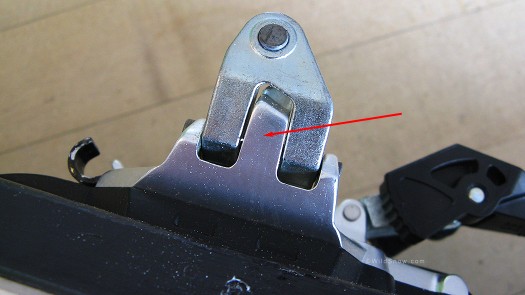
Looking from the side of binding, you can see the Power Towers are simply an extension of the binding base which protrudes up through a slot in the wings.
Okay, the Power Towers do make the binding easier to enter, but do they really add more retention reliability when skiing downhill? To function 100% in blocking sideways pre-release (as demonstrated in vid I linked to above), the Towers have to be almost touching the boot sole. As you can see in the photo, space between boot and Tower is a couple millimeters. In bench testing, I found the Towers did make a side release noticeably more difficult to simulate on the bench, and the binding did not click completely open as do older models without the Towers. Nonetheless, I was still able to simulate a side pre-release during bench testing the Radical ST. My conclusion is the Radical ST and FT Power Towers help, and might even totally prevent the rare but all too real pre-release some skiers experience in the Dynafit toe unit. Field use will be the only way to know for sure, as this type of inadvertent release is poorly understood and difficult to test for.
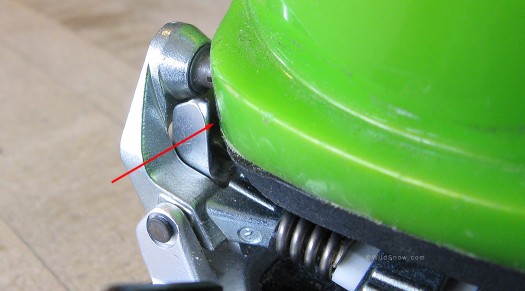
Small gap between Power Tower and boot sole (indicated by arrow) is probably necessary to compensate for manufacturing differences, but in my opinion after testing, the gap makes the Towers less than 100% effective against side pre-release at the toe.
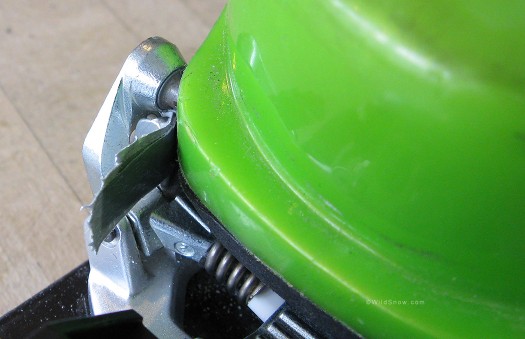
Testing for how the gap influenced things was easy. I simply shimmed the gap closed with layers of duct tape. When testing in this configuration I couldn't get the boot to pre-release to the side even while applying quite a bit of force, but it appeared to still have normal side safety release. I'm no binding engineer so that's as far as I'll go with that.
As covered in previous post, the Radical toe’s base unit is quite a bit different from previous Dynafits. The lower portion is aluminum instead of steel, and it has four mounting holes instead of five. The rearward pair of holes are backward compatible with older Dynafit mounts, but the front pair are located 12mm forward of the legacy position. This meaning you’ll have to drill a new pair of holes to upgrade, but the holes are farther enough ahead to not overlap old holes. For those of you concerned about strength, the toe unit’s plastic base does extend out to the sides and support the aluminum base frame above. The whole unit appears beefy, but we of course have to wait for early adopters to abuse the Radical before we’ll know it is actually radical.
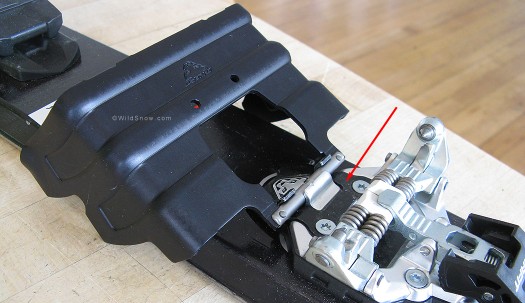
Dynafit Radical crampon mount is nicely executed, and the toe unit appears strong. Arrow indicates steel crampon mount that sandwiches the aluminum frame, a nice touch and big improvement over cosmetic plastic of previous binding models.
Next, the heel unit. Big deal with the Radical heel is of course Dynafit going to flip-up climbing lifts rather than the decades old rotation system. Loved by some and hated by others, fiddling with your ski pole to rotate the Dynafit was probably the binding’s Achilles heel. Enough, stick a fork in it, it’s done and something else has been cooked up by the gnomes of Munich.
The new system is quite simple. When going to touring mode you rotate the heel unit ONCE clockwise, past a mechanical stop that prevents return counter clockwise. You leave it in that position, and flick the heel lifters up and down with your ski pole basket. Doing this is just as easy as the old system, and more intuitive for newbies. It also eliminates binding breakage cause by frustrated skiers levering on the heel unit with their ski poles. To return to downhill mode, continue rotating clockwise until the binding pins are facing forward.
Dynafit dancers note that with your toe locked in the Radical binding you can still go from fixed heel to free heel by rotating the heel unit and popping your heel out (without brakes), but doing so is difficult because you don’t have the old style heel lifter to lever against. MORE IMPORTANTLY, going back to fixed heel from touring mode while in the Radical binding involves a mandatory and potentially awkward 3/4 turn of the heel unit. If you’re staying in the binding, this probably has to be done by reaching back with your hand. Those of us who enjoy staying locked in during the fur rip may find this tougher than reaching back with your ski pole and making a quick flick of the heel unit to return it to downhill mode. Preferences here depend on your flexibility and age, of course.
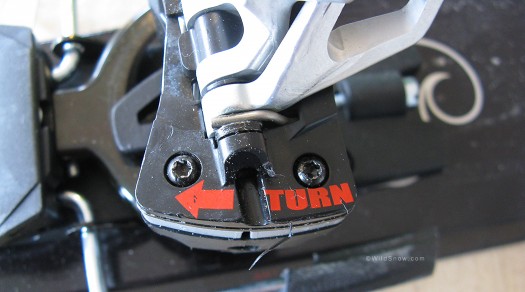
Unlike all other Dynafit heels and most other tech bindings, the heel unit is intended to be rotated in only one direction, and has a mechanical stop if you attempt to over-rotate.
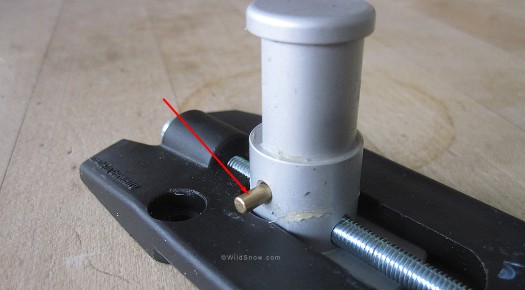
This is WildSnow, so we want to know how stuff works. In this case, it's the mechanical stop for Dynafit heel unit rotation. Basis of this is a tiny spring-loaded pin which rests in a hole in the heel spindle post. When you pull the heel unit off to do things such as installing brakes, the pin goes AWOL if you don't hold your finger over it as you lift the heel unit. To re-install, simply hold the pin in with a small screwdriver or other implement as you slip the heel unit down over the spindle.
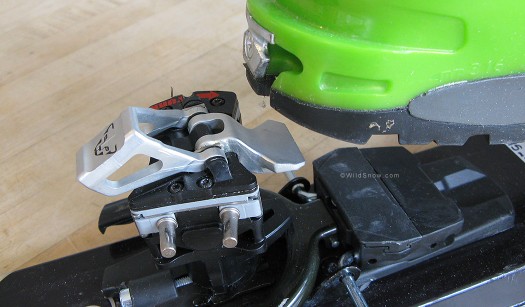
Heel lifter flipped to medium position, as with all other Dynafit bindings you do have a heel-flat-on-ski mode by not using the lifters.
A few more things:
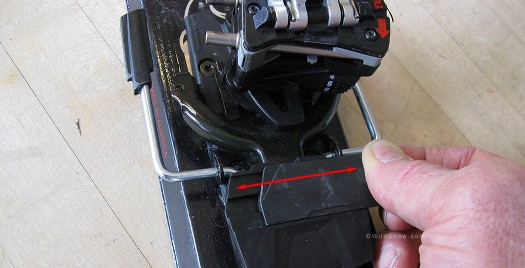
The ski brake has what looks to be a functional AFD. This eliminates having to swap in different lateral release springs depending on if you use a brake or not (previously, because of friction between boot and brake, you'd use a slightly softer spring to compensate).
About the bump pictured above. All early Dynafit bindings (and some recent ones) were molded with a bump that reduced clearance between boot heel and binding. The idea behind this is the fact that as a tech binding equipped ski flexes, the rear binding pins slide in and out of the boot heel fitting; this in turn causes the binding release values to change. More, sometimes during ski flex, the release values may change so much they go outside the variation tolerance of the DIN ISO touring binding standard. At one point Dynafit attempted to obtain TUV/DIN certification, and the bump was added to reduce the range of movement and subsequent release value variation due to ski flex. Think it through, and you realize you do not want your boot heel bumping into the binding when your ski flexes, but the story I heard is that wasn’t a concern to TUV, they only wanted to see release values stay in range. So the bump was added, and rarely caused any problems since you had to be heavy, on soft skis, to hit the bump in any way that could be detrimental.
Nonetheless, common sense made it obvious the infamous bump wasn’t necessary in real life, and could even be detrimental (I grind it off all my bindings, for example). So it was eliminated on the Comfort/ST/FT models, along with using longer pins that allowed even more range for ski flex.
So why the return of the bump? Our theory: Dynafit wants to be the first TUV DIN/ISO certified tech binding, which is perhaps also the reason they added the AFD to the brake. Or perhaps they just didn’t want to spend the money to change their mold. We shall see.
A couple more things:
– Radical has slightly less ramp angle than previous Comfort/ST/FT due to taller toe unit. Difference is minimal (a degree or so, depending on length of boot, but nonetheless should be mentioned.
– Screws use Torx (star) 20 instead of Pozi, which I like in the shop for easy no-slip tightening, but groan, one more bit to carry in the field repair kit. I studied up on Torx and they are indeed intended to resist cam-out (slipping) of your screw driver, while Philips and I assume Pozi are actually designed to cam-out at a certain torque to prevent tool and work damage. There, more than you ever wanted to know about screw drivers.
Conclusion:
After using the new Dynafit Radical ST binding for multiple days, as well as a complete tear-down, we are confident that the new rig will easily equal the performance of earlier FT/ST series bindings. While we see the Power Towers as a non-essential, we do view the heel lifter system as a major improvement for most users. Disappointing that the “bump” has returned, but perhaps the engineers have integrated that in a way that’s functional. Extended testing will reveal all.
(March 2012, please note that after being on the market for a short period, various durability problems occurred with the Radical series bindings. It appears these problems have all been resolved provided you end up with a current iteration of the binding, which is something any retailer can help you with. For more details, please use our search function to check out all our Radical posts.
As of 2019, Dynafit Radicals are still going strong. You can shop for them here.
WildSnow.com publisher emeritus and founder Lou (Louis Dawson) has a 50+ years career in climbing, backcountry skiing and ski mountaineering. He was the first person in history to ski down all 54 Colorado 14,000-foot peaks, has authored numerous books about about backcountry skiing, and has skied from the summit of Denali in Alaska, North America’s highest mountain.

